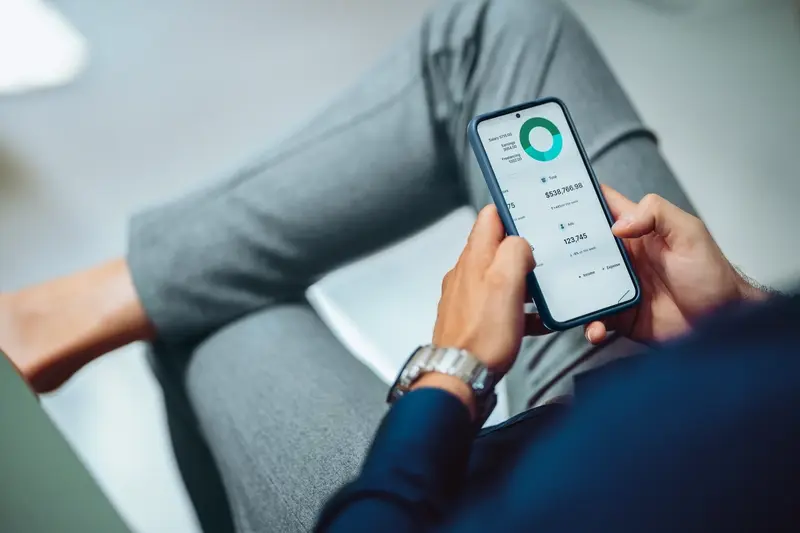What Makes Users Trust Your App Within 3 Seconds?
You launch your app, users download it... and then nothing. They open it once, maybe twice, then it sits there gathering digital dust on their phone. Sound familiar? After years of building apps for companies big and small, I can tell you that most app failures happen within those first few precious seconds of user interaction. It's not about fancy features or complex functionality—it's about whether users instantly feel they can trust your app with their time, data, and attention.
The harsh reality is that users make snap decisions about apps faster than you can blink. They're not sitting there carefully evaluating every design choice or reading your terms of service. They're scanning, feeling, and deciding whether your app feels safe, professional, and worth their while. In those initial moments, their brain is asking: Does this look legitimate? Will it work properly? Can I figure out how to use it? And most importantly—can I trust it?
Trust is the foundation of every successful app relationship, and you have about three seconds to establish it or lose it forever
I've seen brilliant apps with amazing functionality fail because they couldn't nail those first three seconds. Conversely, I've watched relatively simple apps succeed wildly because they understood how to make users feel confident from the moment they opened the app. The difference between success and failure often comes down to understanding user psychology and designing for trust from the very first interaction. That's what we're going to explore together—the specific elements that make users feel instantly comfortable with your app, rather than reaching for that delete button.
The Psychology of Split-Second Judgements
Your brain makes decisions about trustworthiness in milliseconds—and your app users' brains work exactly the same way. When someone opens your app for the first time, they're not consciously thinking "Is this trustworthy?" They're feeling it. And that feeling happens so fast it's almost instant.
I've watched this play out in user testing sessions hundreds of times. People open an app, and within three seconds—sometimes less—you can see it on their face. They either relax into it or their shoulders tense up slightly. Its fascinating to watch, actually. The users who relax? They stick around. The ones who tense up are already mentally checking out.
This isn't about being picky or judgmental; it's basic human survival instinct. Our brains evolved to make quick decisions about safety and trustworthiness because, well, it used to be a matter of life and death. These days we're not worried about sabre-toothed tigers, but that same mental process applies to everything—including your app.
What Your Brain Processes First
When users encounter your app, their subconscious mind processes several trust signals simultaneously:
- Visual consistency and professional appearance
- Loading speed and responsiveness
- Familiar patterns and expected interactions
- Clear purpose and value proposition
- Absence of red flags or warning signs
The mad thing is, users aren't aware this is happening. They just know something "feels right" or "feels off" about your app. But here's what I've learned after years of building apps—you can actually design for this psychological process. You can deliberately create experiences that trigger positive trust responses. And that's exactly what we're going to explore in the chapters ahead.
Visual Design Elements That Build Instant Trust
When someone opens your app for the first time, their brain makes lightning-fast judgements based purely on what they see. It's a bit mad really—we're talking milliseconds here, but those first visual impressions can make or break whether someone trusts your app enough to stick around.
The colour palette you choose sends immediate signals about your app's personality and reliability. Financial apps lean heavily on blues and greys because these colours subconsciously communicate stability and professionalism. Healthcare apps often use calming greens or clean whites to suggest cleanliness and care. But here's the thing—it's not just about picking the "right" colours; it's about using them consistently throughout your app.
Typography and Spacing Matter More Than You Think
I've seen brilliant app concepts fail because the typography looked unprofessional or the spacing felt cramped. Users can't always put their finger on why an app feels "off," but poor typography choices create an instant sense of distrust. Clean, readable fonts with proper line spacing make your app feel polished and trustworthy.
White space—or negative space as designers call it—gives your content room to breathe. Apps that cram too much information onto each screen feel overwhelming and chaotic. Actually, some of the most trusted apps I've built use generous amounts of white space to create a sense of calm and control.
Use a maximum of two font families throughout your entire app. One for headings, one for body text. This creates visual harmony and prevents your app from looking like a ransom note.
The visual hierarchy in your app should guide users naturally through each screen. Important elements need to stand out through size, colour, or positioning, whilst secondary information takes a back seat. When users can quickly understand what's important on each screen, they feel more confident navigating your app.
I've seen thousands of apps lose users in the first few seconds—not because of bad design or poor functionality, but because they simply took too long to load. It's genuinely heartbreaking when you've spent months perfecting an app only to watch people abandon it before they've even seen what it can do.
Here's the reality: users expect your app to load in under two seconds. Not three, not five—two seconds maximum. After that? They start getting restless. By three seconds, many will close the app entirely. It sounds harsh, but that's just how people behave with mobile apps these days.
But speed isn't everything—it's also about what happens during those loading moments. A blank white screen feels like an eternity, even if its only lasting one second. Smart app developers use skeleton screens or progress indicators to show something is happening. This simple trick makes the wait feel shorter and gives users confidence that the app is working properly.
I always tell my clients: your loading screen is prime real estate. Don't waste it on a spinning wheel that tells users nothing. Show them a preview of whats coming—outline boxes where content will appear, or a branded animation that reinforces your app's personality. Users are much more patient when they can see progress happening.
The apps that succeed in those crucial first moments do two things right: they load key content fast (prioritising what users see first), and they communicate clearly during any waiting periods. Get these basics wrong and it doesn't matter how brilliant your app is—most people will never stick around long enough to find out.
Navigation That Feels Natural
When someone opens your app, their brain immediately starts hunting for clues about how to move around. And here's the mad thing—if they can't figure out where to go in those first few seconds, they'll assume your app is broken or badly made. I've seen brilliant apps with incredible functionality get deleted simply because users couldn't work out how to navigate them.
The secret to trustworthy navigation is making it invisible. Users shouldn't have to think about how to get from A to B; they should just know. This means putting your main actions where people expect them—hamburger menus in the top left, search icons in the top right, and primary actions at the bottom where thumbs naturally rest.
The Power of Familiar Patterns
Sure, you might want to be creative with your navigation, but users have been trained by years of using other apps. When you fight against these established patterns, you're asking people to learn something new just to use your app. That's friction they don't want.
Navigation should be boring. The most successful apps use navigation patterns that users already understand from everywhere else.
Visual Cues That Guide Without Overwhelming
Good navigation gives subtle hints about where users can go next. Active states should be obvious—if someone's on the 'Home' tab, make sure it looks different from the others. Breadcrumbs help in deeper sections, and clear back buttons (not just the system ones) show users they won't get lost.
The apps that build trust fastest are the ones where navigation feels effortless. Users shouldn't congratulate themselves for finding something; they should barely notice they found it at all. When navigation works properly, it becomes invisible—and that's when people start trusting your app to take them where they need to go.
Privacy and Security Signals
Let's be honest—users are more paranoid about their data than ever before. And they should be! I've watched the mobile app industry go through massive privacy scandals and regulatory changes that have completely shifted how people think about app security. When someone opens your app for the first time, they're mentally scanning for red flags that suggest their personal information isn't safe.
The thing is, most app developers focus on the technical side of security but forget about the visual cues that actually matter to users. You could have military-grade encryption running in the background, but if your login screen looks sketchy or you're asking for unnecessary permissions, people will nope out of there faster than you can say "data breach".
Permission Requests That Don't Scare People
Here's where most apps get it wrong—they bombard users with permission requests the moment the app opens. Camera access, location data, contacts, notifications... it feels like an interrogation! Instead, ask for permissions only when you need them and always explain why.
- Request camera access when they try to take a photo, not during onboarding
- Explain location permissions with context: "We need your location to show nearby restaurants"
- Make notification permissions optional and explain the benefit clearly
- Never ask for contacts unless it's genuinely necessary for core functionality
Trust Badges and Security Indicators
Visual security indicators work because they tap into established patterns users already recognise. SSL certificates, security badges, and clear privacy links might seem boring, but they're doing heavy lifting in the trust department. For businesses handling sensitive information, implementing comprehensive enterprise security measures becomes absolutely critical to user adoption.
The key is making security feel protective rather than restrictive. When users see that you're taking their privacy seriously without being pushy about it, they'll stick around long enough to discover what makes your app worth using.
Social Proof and Credibility Markers
When someone opens your app for the first time, they're basically asking themselves one question: "Can I trust this thing?" And honestly, they're going to make that decision faster than you can blink. Social proof is like having your best customers standing right there vouching for you—except its all happening through clever design choices and strategic placement of trust signals.
I've seen apps lose users within seconds simply because they didn't show any signs of credibility. No reviews, no user counts, no indication that real people actually use this thing. It's a bit mad really, because adding these elements is straightforward, but so many developers skip them entirely.
Place your highest rating or most impressive user statistic where new users will see it immediately—usually on your onboarding screen or main dashboard. Even something like "Join 10,000+ users" works wonders for first impressions.
What Actually Works as Social Proof
User ratings and reviews are obvious choices, but there's more to it than just slapping a five-star rating somewhere. The context matters; showing "4.8 stars from 2,847 reviews" feels more genuine than a perfect 5.0 from twelve people. Real user testimonials work brilliantly too—short quotes from actual users about how your app helped them solve a specific problem.
Usage statistics can be powerful trust builders. "Over 1 million photos shared" or "Trusted by 50,000 small businesses" immediately signals that other people find value in what you've built. But here's the thing—don't make numbers up or exaggerate them because savvy users can usually tell when something feels off.
- Display recent user activity or community engagement
- Show security certifications or compliance badges
- Include media mentions or awards your app has received
- Feature user-generated content that demonstrates real usage
- Add professional associations or partnerships you have
The key is making these credibility markers feel natural rather than pushy. Users can sense when you're overselling, and that actually damages trust rather than building it. Keep your social proof genuine, specific, and placed where it naturally fits into the user experience.
Content and Copy That Connects
Your app's words are doing more heavy lifting than you might think. I mean, users are making snap judgements about whether they can trust your app based on a few sentences they see in those first precious seconds. Get the tone wrong, use confusing language, or sound too salesy? Game over.
The biggest mistake I see is apps trying to sound clever or corporate when they should be having a conversation. Your onboarding copy, button labels, and error messages need to sound like they're coming from a real person who actually cares about helping users—not from some marketing department that's had too much coffee.
Writing That Works in Seconds
Keep your language simple and direct. If a 12-year-old can't understand what you're asking them to do, you've already lost them. "Sign up to unlock personalised recommendations" beats "Leverage our algorithmic matching system" every single time. Honestly, some of the copy I see makes me wonder if people forget they're writing for humans, not robots.
Error messages are where trust goes to die if you're not careful. Instead of "Error 404: User authentication failed", try "Something went wrong with your login. Let's try again." It's the difference between sounding broken and sounding helpful.
- Use active voice instead of passive wherever possible
- Write button labels that tell users exactly what happens next
- Keep sentences under 20 words when explaining important actions
- Test your copy with actual users, not just your team
- Make sure your privacy policy is written in plain English
The copy in your app isn't just filling space—it's building relationships. Every word either brings users closer to trusting you or pushes them towards that uninstall button. This is particularly important for features like notifications, where understanding how to segment users for personalised messaging can make the difference between engagement and annoyance.
Testing and Measuring Trust Factors
Right, so you've built what you think is a trustworthy app interface—but how do you actually know if users feel the same way? This is where proper testing comes in, and honestly, some of the results might surprise you. I've seen apps that looked perfect on paper completely fail the trust test with real users; it's a bit mad how subjective trust can be.
The most effective way to measure trust is through user testing sessions where you watch people interact with your app for the first time. Ask them to think aloud as they navigate—you'll quickly spot moments where they hesitate or express doubt. Pay attention to their facial expressions too; raised eyebrows or confused looks often signal trust issues before they even voice them.
Key Metrics That Matter
Track your app's bounce rate on the first screen—if people are leaving within seconds, that's your trust alarm going off. Time to first meaningful action is another good indicator; users who trust your app will engage more quickly. Understanding these patterns is crucial because research shows that most users abandon apps during the initial onboarding, making these early moments absolutely critical.
The data doesn't lie, but it doesn't tell the whole story either. You need to combine analytics with genuine human feedback to really understand trust.
A/B testing works brilliantly for trust elements. Try different security badges, testimonial placements, or loading screen messages. But here's the thing—test one element at a time, otherwise you won't know what's actually making the difference. I usually run tests for at least a week to account for different user types and behaviours. The goal isn't perfection; it's understanding what works for your specific audience and continuously improving their first impression of your app.
Building trust in those first few seconds isn't about tricking users or using fancy psychological techniques—it's about respecting them enough to make their experience smooth from the very first tap. After years of working with clients across every industry you can think of, I've seen how these small details can make or break an app's success.
The apps that succeed long-term are the ones that nail the basics: they load quickly, look professional, feel secure, and actually work as expected. Simple stuff really, but you'd be surprised how many apps get this wrong. Users have become incredibly good at spotting red flags within seconds of opening an app, and once that trust is broken, it's bloody difficult to get back.
What really matters is consistency across every touchpoint. Your loading screen, your onboarding flow, your navigation patterns, your copy—they all need to work together to create that feeling of reliability. Users shouldn't have to think about whether they can trust your app; it should feel obvious from the moment they start using it.
The mobile landscape keeps changing, but user expectations around trust remain fairly constant. People want to feel safe, understood, and confident that your app will do what it promises without wasting their time or compromising their privacy. Get those fundamentals right, and everything else becomes much easier.
Remember, you only get one chance to make that first impression. Make it count by focusing on the user's needs rather than your own clever ideas. Trust me—your download numbers will thank you for it.
Share this
Subscribe To Our Learning Centre
You May Also Like
These Related Guides

What Features Do Users Expect From Banking Apps?

What Makes Customers Want to Use Your Business App Every Day?



